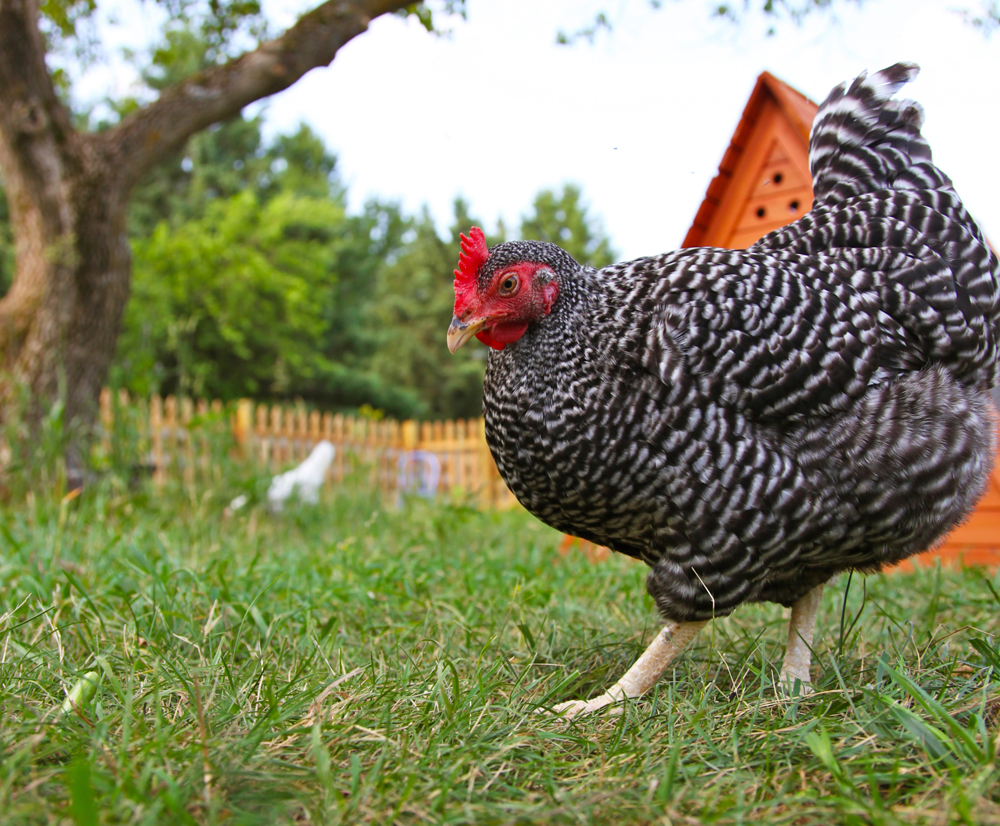How onerous is this requirement? The Cornucopia Institute, which has been campaigning to keep organic farming true to its alternative roots, called the draft regulations a plot by the FDA and the USDA to "eliminate true organic production," with chickens grazing on pastures.
Cameron Molberg, general manager of egg production at Coyote Creek Farm in Elgin, Texas, says the rules could even destroy his business. At Molberg's operation, called World's Best Eggs, 10,000 egg-laying chickens graze on 60 acres of pasture, where they scratch in the dirt for worms and bugs.
Building a canopy over the pasture, Molberg says, isn't financially feasible. Even protecting a small part of it "would cost 10 times more than our entire profit last year." Also, any structure that cuts off sun or rain would quickly turn a grass-covered pasture into dry dirt. "It kind of defeats the purpose of pastured eggs, to be honest," he says.
Molberg is convinced that the new rules aren't necessary. He tests his farm's eggs for salmonella and has found none. "A hen in a natural environment is less stressed, and she's less likely to get sick," he says.
On the other hand, David Bruce, who's in charge of egg production at Organic Valley, doesn't think that the FDA guidance will create any problems at all.
According to Bruce, the FDA's "guidance" document is simply a recommendation, but it does not have the legal force of an actual regulation. "It's not something that they're going to enforce," he says. "What they're trying to do is make sure that you aren't being sloppy. That you have a plan" to manage the risks that wildlife can pose.
Some large-scale organic producers have their chickens go "outdoors" by moving to "porches" or "runs" that are next to chicken houses. These areas often are much smaller than the houses, and frequently are covered and enclosed by screens.
Bruce says that such hen houses make up only a small portion — less than 10 percent — of Organic Valley's egg production. The rest of the hens, he says, do graze outside. Bruce says the company has no plans to enclose them.
There's little solid evidence that eggs from chickens on pasture are more likely to carry salmonella. A study in Great Britain, in fact, found less salmonella contamination in eggs from non-caged chickens. (Many cage-free chickens, however, are kept indoors.)
As it happens, the release of the FDA guidance coincides with a related dispute that has divided organic egg producers.
The Organic Standards Board recently considered a proposal, backed by the Cornucopia Institute, that would have required organic egg producers to provide at least 5 square feet of outdoor space per hen. The institute has put together a rogue's gallery of organic henhouses that offer chickens only limited access to the outdoors.
Large-scale organic producers, however, succeeded in defeating the proposal, arguing that it would have driven some of them out of the organic side of the egg business.
Copyright 2013 NPR.
